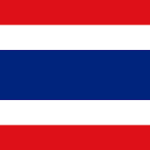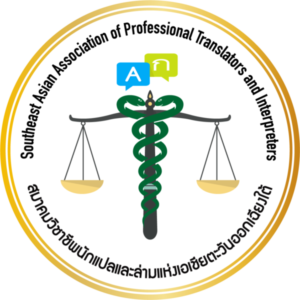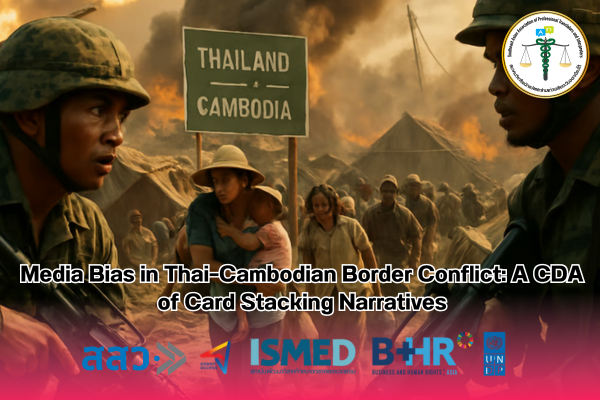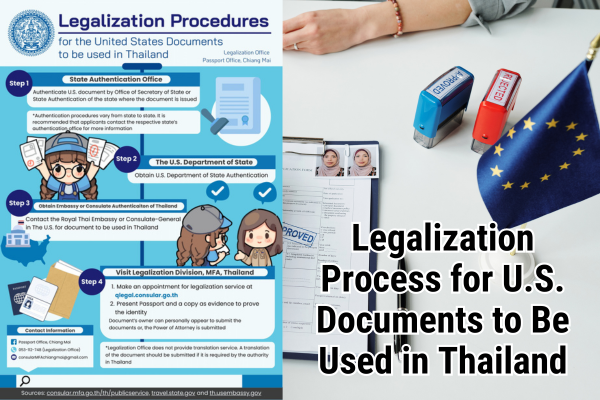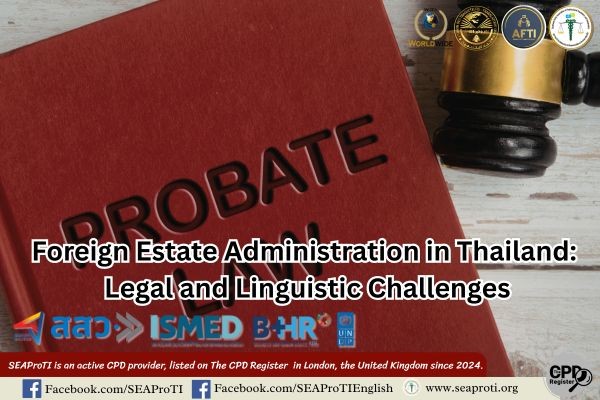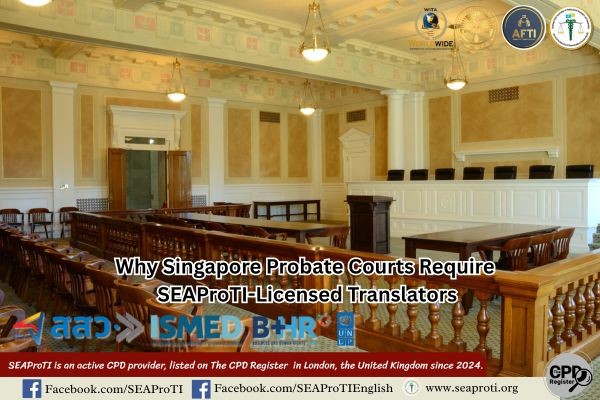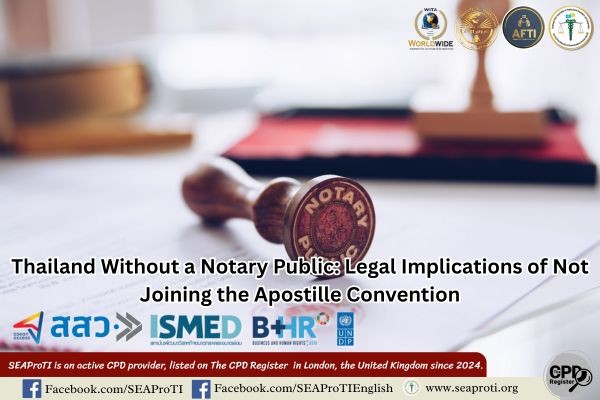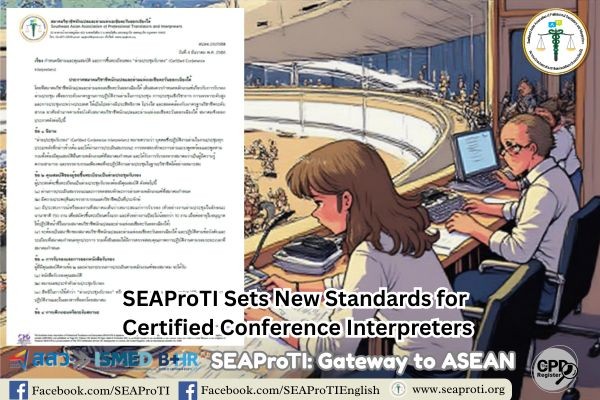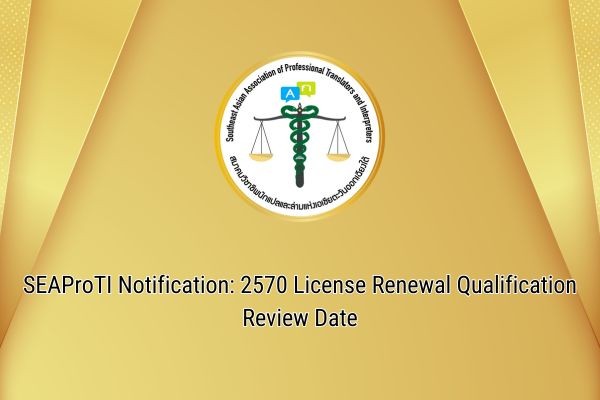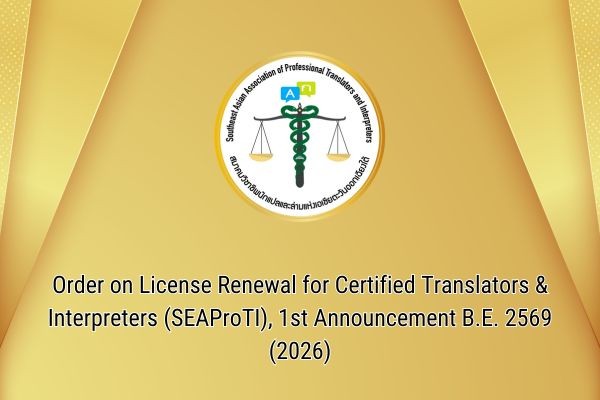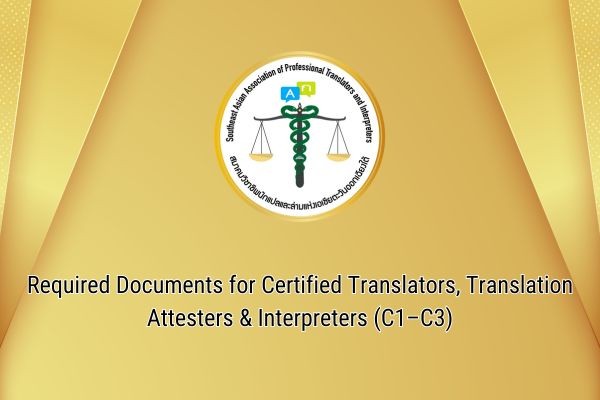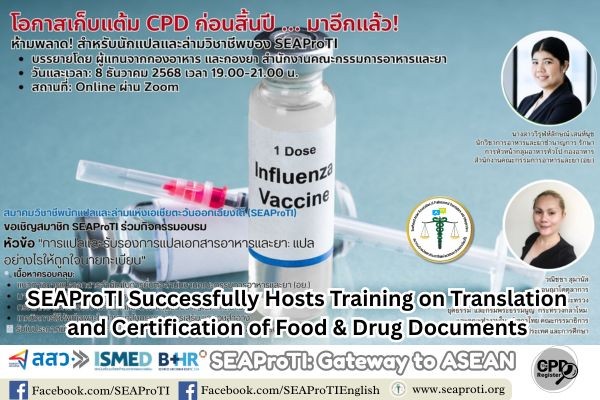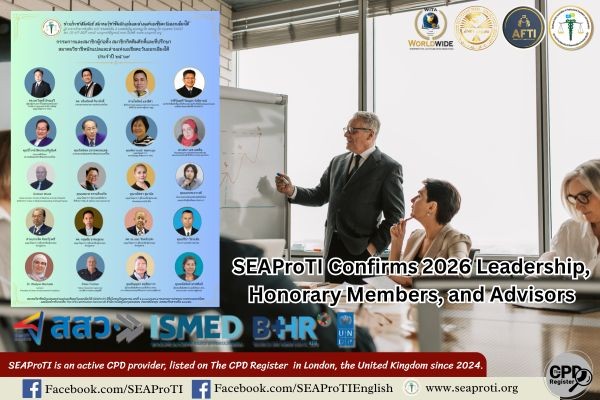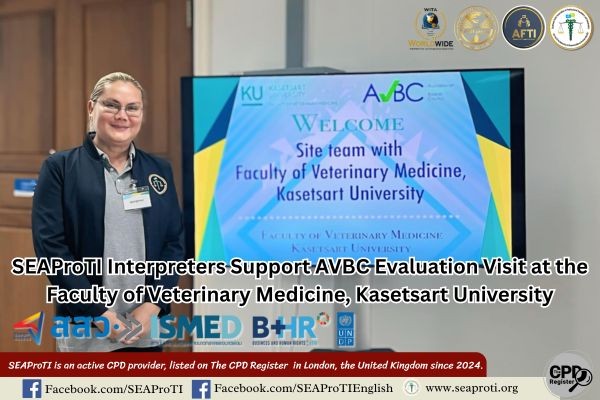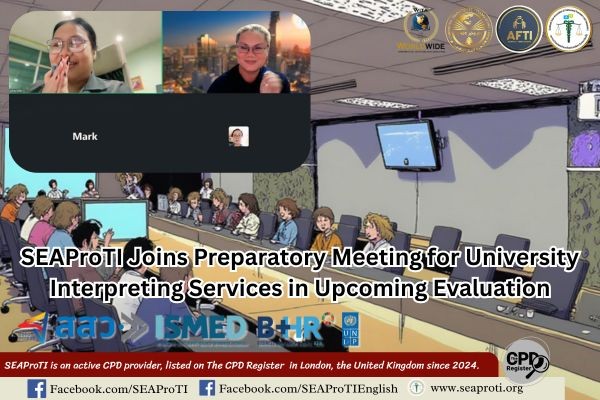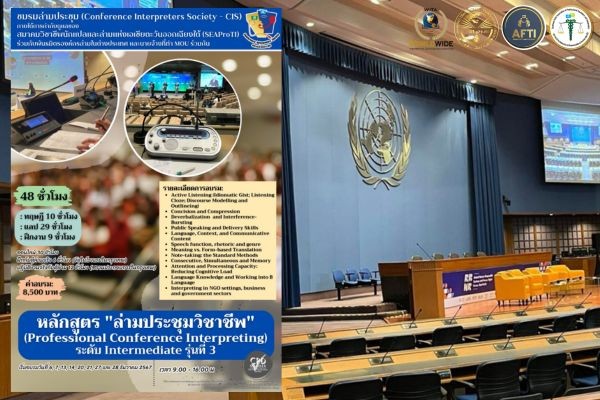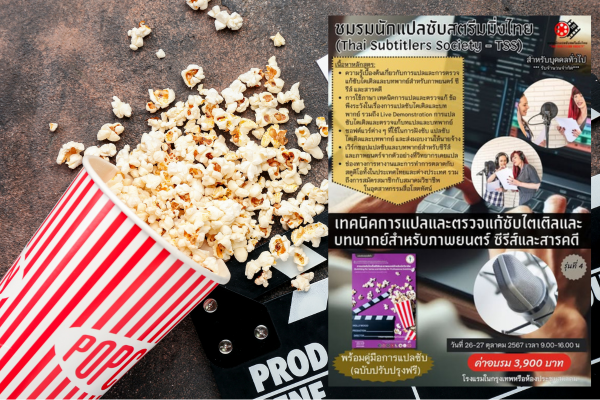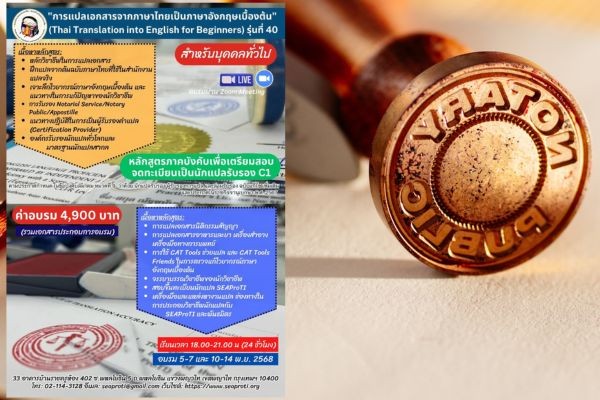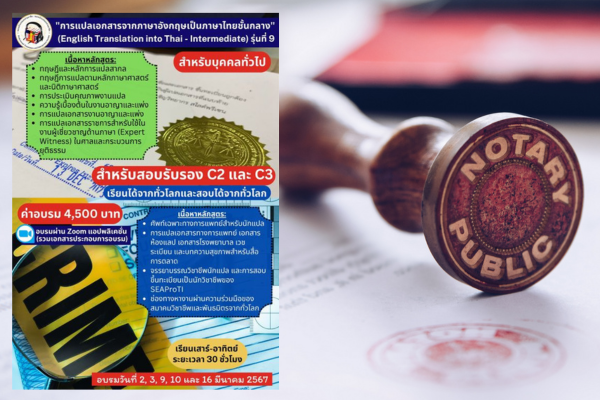When the Media Takes Sides: Thai–Cambodian Coverage and the Card Stacking Strategy in Border Conflict Narratives: Using Fairclough’s Three-Level Framework for Critical Discourse Analysis (CDA)
By Wanitcha Sumanat, President, Southeast Asian Association of Professional Translators and Interpreters (SEAProTI)
26 July 2025, Bangkok – In times of international conflict, the sounds of gunfire may echo less loudly than the voices of the media. What people come to believe is often not “the truth,” but rather a curated narrative. During the 2025 Thai–Cambodian border crisis, both nations’ media outlets played a key role in shaping public perception, each side working to legitimize its national position.
A prominent strategy employed by both sides was Card Stacking, a propaganda technique where only favorable information is highlighted, while inconvenient or contradictory facts are downplayed or omitted. This article explores how such discursive strategies operate through the lens of Norman Fairclough’s Critical Discourse Analysis (CDA), which examines language on three interconnected levels: Text, Discourse Practice, and Sociocultural Practice.
1. Text Level: When Words Construct “Us” and “Them”
An examination of mainstream news content from both Thai and Cambodian sources reveals a stark contrast in perspective.
In Thai media, terms like “aggression,” “invasion,” “violation of sovereignty,” and “attacks on civilians” are frequently used. Reports emphasize Cambodian forces as the initiators of violence, often omitting context or imagery that may show Thai military responses, such as troop movements or artillery strikes.
Meanwhile, Cambodian media deploys similar terminology in reverse: “Thai military violates human rights,” “attacks on sacred areas,” and “destroys peace.” Cambodian outlets frequently feature images of wounded civilians and official condemnations, without acknowledging whether their forces initiated hostilities.
This Card Stacking technique filters reality into a simplified binary: one side is the victim, and the other the aggressor. Each national audience is exposed only to narratives that affirm their side’s moral high ground.
2. Discourse Practice Level: When the Media Becomes the Mouthpiece of the State
The majority of reports in both countries rely heavily on official statements from ministries of defense, foreign affairs, or military command. There is little room for alternative voices, such as independent analysts, human rights advocates, or testimonies from civilians in conflict zones.
This selective sourcing is not incidental. It reflects a broader pattern of reproducing state discourse, in which the media does not question state narratives but rather reinforces them. In this environment, the press often becomes a mechanism of nationalist affirmation rather than critical inquiry.
As these state-approved messages are disseminated across digital and broadcast platforms—websites, television, and social media—they acquire an air of factual certainty. The repetition embeds these narratives into the collective consciousness of the nation, turning “discourse” into “truth.”
3. Sociocultural Practice Level: Media as an Ideological Battlefield
The 2025 border clashes were not merely a military encounter—they are rooted in historical tensions, ethnic memory, and contested cultural heritage.
In both Thai and Cambodian contexts, where past conflicts over borders, temples, and historical claims linger, news reporting is rarely “neutral.” The media is expected—by both the state and the public—to adopt a patriotic stance. Reporting that appears too balanced or critical of national actions can be branded as “unpatriotic” or even “traitorous.”
This ideological pressure makes Card Stacking not just a strategy but a normative media practice, especially during crises. The resulting media landscape privileges national legitimacy over journalistic impartiality.
Lessons from the Crisis
While battles may occur along physical borders, the discursive battle unfolds in the minds of the public. When information is selectively presented to favor one side, it may rally nationalist sentiment, but it also distorts the complexity of events and obstructs paths to sustainable resolution.
In such contexts, news consumers must recognize that every word, every image, and every headline is a choice. Critical thinking and awareness of media framing are essential defenses against manipulation, particularly in times of tension.
References
- Fairclough, N. (1995). Media Discourse. London: Edward Arnold.
- van Dijk, T. A. (1998). Ideology: A Multidisciplinary Approach. Sage Publications.
- Halliday, M. A. K. (1985). An Introduction to Functional Grammar.
In conclusion, understanding the mechanics of Card Stacking and Critical Discourse Analysis allows us to see how media can shape and even escalate conflicts. Only through informed consumption and critical engagement can we move toward a more nuanced understanding of truth in times of crisis.
SEAProTI’s certified translators, translation certification providers, and certified interpreters:
The Southeast Asian Association of Professional Translators and Interpreters (SEAProTI) has officially announced the criteria and qualifications for individuals to register as “Certified Translators,” “Translation Certification Providers,” and “Certified Interpreters” under the association’s regulations. These guidelines are detailed in Sections 9 and 10 of the Royal Thai Government Gazette, issued by the Secretariat of the Cabinet under the Office of the Prime Minister of the Kingdom of Thailand, dated July 25, 2024, Volume 141, Part 66 Ng, Page 100. The Royal Thai Government Gazette
เมื่อสื่อเลือกข้าง: สื่อไทย–กัมพูชา กับกลยุทธ์ Card Stacking สร้างภาพจำในวิกฤตชายแดน
โดยใช้กรอบวิเคราะห์วาทกรรม 3 ชั้นของ Fairclough
โดย วณิชชา สุมานัส นายกสมาคมวิชาชีพนักแปลและล่ามแห่งเอเชียตะวันออกเฉียงใต้
26 กรกฎาคม 2568, กรุงเทพ – ในยามที่เกิดความขัดแย้งระหว่างประเทศ เสียงจากสนามรบอาจดังน้อยกว่าเสียงจากสื่อ และสิ่งที่ผู้คนรับรู้ อาจไม่ใช่ “ความจริง” แต่คือ “เรื่องเล่าที่ถูกคัดเลือก” สื่อไทยและสื่อกัมพูชาต่างก็มีบทบาทสำคัญในวิกฤตการณ์ชายแดนปี 2025 ซึ่งต่างฝ่ายต่างพยายามสร้าง “ความชอบธรรม” ให้กับประเทศของตน
หนึ่งในเทคนิคที่ทั้งสองฝ่ายใช้ได้อย่างชัดเจนคือ Card Stacking หรือการเลือกเสนอเฉพาะข้อมูลที่ “เข้าทาง” ฝ่ายตน ขณะเดียวกันก็ลดทอนหรือละเลยข้อมูลที่อาจทำให้ฝ่ายตนเสียเปรียบ บทความนี้จะพาผู้อ่านสำรวจการทำงานของเทคนิคดังกล่าว ผ่านกรอบการวิเคราะห์วาทกรรมเชิงวิพากษ์ (Critical Discourse Analysis – CDA) ของ Norman Fairclough ซึ่งประกอบด้วย 3 ชั้น ได้แก่ ระดับข้อความ (Text), การปฏิบัติทางวาทกรรม (Discourse Practice) และบริบททางสังคมวัฒนธรรม (Sociocultural Practice)
1. ชั้นข้อความ (Text): เมื่อคำพูดสร้างความเป็น “เรา” และ “เขา”
หากพิจารณาจากเนื้อหาข่าวที่รายงานโดยสื่อหลักของไทยและกัมพูชา จะเห็นความแตกต่างอย่างมีนัยสำคัญในเรื่อง “มุมมอง”
ในฝั่งสื่อไทย เราพบคำอย่าง “บุกโจมตี”, “รุกราน”, “ละเมิดอธิปไตย”, “โจมตีพลเรือน” ถูกใช้บ่อยครั้ง ข้อมูลที่นำเสนอเน้นภาพฝ่ายกัมพูชาเป็นผู้เริ่มการสู้รบ ขณะเดียวกัน สื่อก็มักละเว้นรายละเอียดที่อาจบ่งบอกถึงการตอบโต้กลับของไทย เช่น ภาพทหารไทยเคลื่อนกำลังเข้าแนวชายแดน หรือการใช้ปืนใหญ่ยิงตอบโต้
ขณะที่สื่อกัมพูชา ก็ใช้คำที่คล้ายกันในทิศทางตรงกันข้าม เช่น “กองทัพไทยละเมิดสิทธิ”, “ยิงโจมตีพื้นที่ศักดิ์สิทธิ์”, “ทำลายสันติภาพ” และมักแนบภาพพลเรือนกัมพูชาบาดเจ็บ พร้อมแถลงการณ์ประณามฝ่ายไทย โดยไม่เอ่ยถึงว่ามีการเปิดฉากยิงก่อนจากฝั่งตนเองหรือไม่
เทคนิค Card Stacking ทำให้ประชาชนของทั้งสองประเทศได้รับ “เรื่องเล่า” ที่ถูกเลือกแล้วว่า ใครเป็น “เหยื่อ” และใครเป็น “ผู้รุกราน”
2. ชั้นปฏิบัติการวาทกรรม (Discourse Practice): เมื่อสื่อเป็นกระบอกเสียงของรัฐ
ข่าวส่วนใหญ่ที่เผยแพร่ทั้งในไทยและกัมพูชา มักอ้างอิงจากคำแถลงของหน่วยงานรัฐ เช่น กระทรวงกลาโหม กองบัญชาการกองทัพ หรือกระทรวงการต่างประเทศ ไม่ค่อยมีการสัมภาษณ์นักวิเคราะห์อิสระ นักสิทธิมนุษยชน หรือแม้แต่ประชาชนในพื้นที่
ที่น่าสังเกตคือ การเลือกแหล่งข่าวเหล่านี้ไม่ใช่เรื่องบังเอิญ แต่สะท้อนแนวโน้มของการผลิตซ้ำวาทกรรมของรัฐ (reproduction of state discourse) ที่ทำให้สื่อกลายเป็น “ผู้เผยแพร่ความถูกต้องของชาติ” มากกว่าจะทำหน้าที่ตั้งคำถาม
เมื่อสื่อกระจายเนื้อหาเดียวกันผ่านหลายช่องทาง ทั้งข่าวออนไลน์ โทรทัศน์ หรือเพจโซเชียลมีเดีย ผลที่เกิดขึ้นคือ วาทกรรมที่รัฐสร้างไว้ได้รับการเสริมพลังอย่างไม่รู้ตัว และกลายเป็น “ความจริง” ในจิตสำนึกของประชาชน
3. ชั้นบริบททางสังคม–วัฒนธรรม (Sociocultural Practice): สื่อในสนามอุดมการณ์
วิกฤตการณ์ชายแดนในปี 2025 ไม่ใช่เพียงเรื่องทหารยิงปะทะ แต่ยังเป็นผลพวงจากประวัติศาสตร์ชาติพันธุ์ ความทรงจำร่วม และอัตลักษณ์ที่สั่งสมมานาน
ในบริบทของไทยและกัมพูชา ซึ่งต่างมีประวัติศาสตร์ความขัดแย้งเกี่ยวกับเขตแดน วัดโบราณ และมรดกทางวัฒนธรรม การเสนอข่าวจึงไม่ใช่เรื่อง “เป็นกลาง” ได้ง่าย ๆ
สื่อถูกคาดหวัง (ทั้งโดยรัฐและประชาชน) ให้มีจุดยืนรักชาติ การนำเสนอข่าวที่ไม่เข้าข้างชาติอาจถูกมองว่า “ขายชาติ” หรือ “ไม่จงรักภักดี” นี่คือแรงกดดันทางอุดมการณ์ที่ทำให้การเลือกข้อมูลแบบ Card Stacking กลายเป็นสิ่ง “ปกติ” ในระบบข่าวสาร
บทเรียนจากวิกฤตการณ์นี้
แม้จุดพิพาทจะเกิดขึ้นที่แนวชายแดน แต่การต่อสู้เชิงวาทกรรมกำลังเกิดขึ้นในพื้นที่จิตใจของผู้รับสาร การเลือกเสนอเฉพาะด้านที่เป็นประโยชน์ต่อฝ่ายตน อาจช่วยปลุกเร้าอารมณ์ชาตินิยม แต่ก็ทำให้ภาพเหตุการณ์ถูกบิดเบือน จนไม่สามารถนำไปสู่การแก้ปัญหาที่ยั่งยืนได้
ผู้บริโภคข่าวจำเป็นต้องรู้เท่าทันว่า ทุกถ้อยคำ ทุกภาพ และทุกพาดหัว ล้วนผ่านการ “เลือก” มาแล้วทั้งสิ้น และเราควรตั้งคำถามกับสิ่งที่เห็น มากกว่ารับมาอย่างไร้ข้อสงสัย
แหล่งอ้างอิง
- Fairclough, N. (1995). Media Discourse. London: Edward Arnold.
- van Dijk, T. A. (1998). Ideology: A Multidisciplinary Approach. Sage Publications.
- Halliday, M. A. K. (1985). An Introduction to Functional Grammar.
เกี่ยวกับนักแปลรับรอง ผู้รับรองการแปล และล่ามรับรองของสมาคมวิชาชีพนักแปลและล่ามแห่งเอเชียตะวันออกเฉียงใต้
สมาคมวิชาชีพนักแปลและล่ามแห่งเอเชียตะวันออกเฉียงใต้ (SEAProTI) ได้ประกาศหลักเกณฑ์และคุณสมบัติผู้ที่ขึ้นทะเบียนเป็น “นักแปลรับรอง (Certified Translators) และผู้รับรองการแปล (Translation Certification Providers) และล่ามรับรอง (Certified Interpreters)” ของสมาคม หมวดที่ 9 และหมวดที่ 10 ในราชกิจจานุเบกษา ของสำนักเลขาธิการคณะรัฐมนตรี ในสำนักนายกรัฐมนตรี แห่งราชอาณาจักรไทย ลงวันที่ 25 ก.ค. 2567 เล่มที่ 141 ตอนที่ 66 ง หน้า 100 อ่านฉบับเต็มได้ที่: นักแปลรับรอง ผู้รับรองการแปล และล่ามรับรอง
